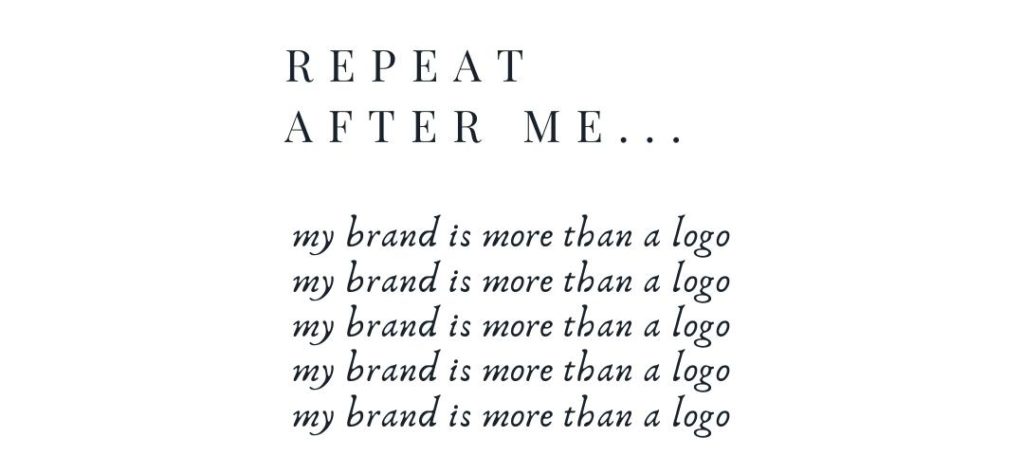What is relaunching in brand management?
Relaunching a brand is the process of creating a new brand identity, strategy, and marketing plan and moving away from the old brand. When done successfully, a brand relaunch can breathe new life into a company, improving sales and perception. However, if it’s not done well, a relaunch can be damaging to a company’s reputation and bottom line.
Many companies choose to relaunch their brands to revitalize their image and create a new relationship with customers. Look at companies such as Microsoft, Coca-Cola, and Apple. They have all relaunched their brands multiple times throughout their histories.
Brand relaunches vary from simple brand development or evolution to a total overhaul of the existing brand, with new target markets, message, and identity.

Why do companies relaunch their brands?
There are three main reasons to relaunch your brand:
- You’ve outgrown your current brand identity
- Your brand is no longer relevant or appealing to your target market
- Your branding is no longer effective at achieving your business goals
There are many reasons companies might choose to relaunch their brand. Perhaps they have experienced a change in leadership or a shift in their target market. Maybe the company has gone through a merger or acquisition and needs to create a new brand identity that is distinct from the old one. Or they may simply feel that their current brand is no longer resonating with their customers.
Whatever the reason, rebranding can be a risky proposition. It can be expensive, time-consuming, and may not be successful. However, if done correctly, a relaunch can breathe new life into a company and rejuvenate its relationship with customers.
So, if you’re considering relaunching your brand, it’s important to do your research and make sure you have a clear plan in place.

Benefits of launching a new brand
There are several benefits of launching a new brand, including:
A fresh start
A relaunch can give a company a fresh start and help them move away from any negative associations with its old brand.
New identity
A new brand can help a company to redefine itself and create a new identity that is more in line with its current strategy and vision.
New marketing plan
A relaunch provides an opportunity to create a new marketing plan that aligns with the company’s new brand identity and goals.
Greater clarity
A relaunched brand can help to clarify a company’s position in the market and make it easier for customers to understand what they offer.
Reinforced positioning
A relaunched brand can help to reinforce a company’s position in the market and make it more difficult for competitors to steal market share.
Greater differentiation
A new brand can help a company to differentiate itself from its competitors and stand out in a crowded marketplace.
Improved customer relationships
A relaunched brand can help to improve a company’s relationship with its customers and create more loyalty.
Increased brand awareness
A relaunch can help to increase a company’s brand awareness and make it more recognisable to consumers.
New opportunities
A relaunched brand can open up new opportunities for the company, such as expanding into new markets or launching new products and services.
One potential downside of relaunching your brand is that it may cause confusion among customers and make it more difficult for them to recognise your company.
What about brand recognition?
You need to make sure that you communicate the changes to your brand clearly to your target market, so they understand what you’re trying to achieve. You may also need to invest in some marketing and advertising to get the word out.
So, if you’re considering relaunching your brand, it’s important to do your research and make sure you have a clear plan in place. The benefits can be significant, but it’s important to remember that there is no guarantee of success.

Creating a successful brand launch plan
Assemble a team of Brand Ambassadors
The rebranding process is not an easy one. If you can align yourself with proactive brand ambassadors, your rebranding process will be much smoother and more successful. Brand ambassadors are customers who are passionate about your brand and are eager to share their love with others.
Your internal brand ambassadors will be a part of the brand launch process. These employees should be passionate about the brand and be able to help to promote it to other employees, customers, and partners.
They will be your champions for internal buy-in and evangelising the brand externally.
Conduct a brand audit
Before you can begin to rebrand your company, you need to take a good, hard look at your brand. What are its strengths? What are its weaknesses? What does it stand for?
You also need to take a look at your competition and see how your brand stacks up. This will help you to determine what changes you need to make and how you can improve your position in the market.
Develop Your Rebrand Story and Launch Idea
Before you can actually begin the process of relaunching your brand, you need to come up with a clear plan and strategy. This includes developing a story and launch idea for your new brand.
Your story should be based on your company’s unique selling proposition (USP) and explain why you’re relaunching your brand.
Create a final detailed launch calendar
Based on the communications plan for each audience, outline every product or service deliverable in a single timeframe, including each stage of communications for each audience and precisely communicating how it was delivered.
Make a detailed list of all the deliverables, then develop an overall timeline for the launch.
Launch a teaser campaign
A teaser campaign is a great way to build excitement for your relaunch and get people excited about what’s coming. It can also help to generate some early buzz and create a positive sentiment around your new brand.
Your teaser campaign should be short and sweet, and it should focus on generating curiosity and anticipation
Host a launch
As a minimum, plan an internal brand launch to get all of your employees on board with the new brand and make sure they’re properly trained to represent it. Your rebranding launch will help to ensure a successful launch and create a unified front across all channels.
If it’s appropriate, host a launch event! A launch event is a great way to officially introduce your new brand to the world. It’s also an opportunity to connect with customers and stakeholders and give them a taste of what your new brand is all about.
Your launch event should be well-planned and well-executed, and it should include a presentation of your new brand, as well as a chance for customers and stakeholders to ask questions.
Keep the momentum going
Once your brand relaunch event is over, it’s important to keep the momentum going by continuing to promote your new brand and releasing new content and communications. This will help to keep the excitement around your relaunch alive and ensure that your new brand is off to a strong start.

Create a set of clear brand guidelines
Your new brand guidelines should be clear, concise, and easy to follow. They should outline everything from your brand’s logo and colour palette to the tone and voice of your communications.
All brand touchpoints should be aligned with your brand guidelines, so it’s important to make sure they’re properly implemented across all channels.
Make sure that everyone who is involved in creating or communicating with the public about your brand is familiar with your brand guidelines, and enforce them rigidly to ensure a consistent brand experience for customers
There are a lot of things to consider when relaunching your brand, but following these tips will help you to create a successful plan that will get your brand off to a strong start.
Tips for a successful brand relaunch
1. Stay focused
When rebranding, it’s important to stay focused on your goals and objectives. Don’t get distracted by side projects or try to do too many things at once.
2. Plan ahead
The success of a brand relaunch depends heavily on careful planning and organisation. Take the time to develop a detailed plan and make sure that everything is accounted for.
3. Be patient
Don’t expect a brand relaunch to be an overnight success. It takes time and effort to build a successful new brand, so be patient and keep working at it.
4. Be consistent
Consistency is key when relaunching a brand. Make sure that all of your communications are aligned and that your brand image is consistent across all platforms.
5. Be creative
A successful relaunch requires creativity and innovation. Come up with a strong launch idea and make sure that you stand out from the competition.
6. Listen to feedback
Make sure to listen to feedback from customers and stakeholders after
7. Be prepared for questions and criticism
A brand relaunch can be a controversial topic, so be prepared for questions and criticism. Have a solid plan in place for dealing with the potential negative backlash.

Crafting your new brand elements
When creating your new brand, it’s important to remember that we’re not just talking about your brand logo. Your brand is the complete experience that a customer has with your company. Everything from the way you talk to customers on the phone, to the font you use on your website should be taken into account when creating your new brand.
To develop a successful relaunch, you need to start by developing a clear and concise brand strategy. This document should outline your brand’s goals, objectives, and target audience. It should also include a description of your brand’s personality and the tone and voice of your communications.
The rebranding process should be a strategic decision involving a variety of internal stakeholders. Once everyone is on board, it’s time to start developing your new brand elements.
Above the surface
New Logo
Logo design is often seen as the most important part of branding, but it’s only a small part of the equation. Your logo should be eye-catching and memorable, but it’s more important to focus on developing a strong brand identity that will resonate with your target audience.
Your logo is the foundation of your brand and should be designed with care. It’s important to choose a logo that is memorable and representative of your company’s values. Be sure to choose a colour palette and typography that will be consistent with your brand image
Your brand colours, typography, and overall aesthetic should be aligned with your target market and reflect the values of your company.
Tagline
A good tagline can help to sum up your brand’s personality and values in a few words. It should be catchy and memorable, and it should also be relevant to your target market.
Think about the overall tone of your communications and make sure that your tagline reflects that. If you want to come across as professional and authoritative, then you’ll need a different tagline than if you want to come across as fun and playful.
Visual Identity
The visual identity of your brand is what customers see when they encounter your company. It includes everything from the logo to the typeface you use in your marketing materials.
It’s important to ensure that all of your visual elements are aligned and consistent across all platforms. This will help to craft a strong and unified brand image that customers will recognise and trust
Below the surface
Brand Mission
Your brand mission should be more than just a tagline or a mission statement. It should be a clear and concise explanation of why your company exists and what you’re trying to achieve.
It should also be relevant to your target market and reflect the values of your company.
Brand Values
Your brand values are the foundation of your company. They define who you are as a business and guide all of your decisions.
When developing your values, it’s important to think about what’s important to you and your target market. Do you value quality, innovation, or customer service?
Make sure that your values are relevant to your target market and reflect the values of your company.
Brand Positioning
Brand positioning is the way that your company is seen in the market. It’s important to ensure that your brand positioning is clear and consistent and that it reflects the values and goals of your company.
You may want to consider hiring a marketing agency to help you develop a strong brand positioning that will resonate with your target market.
Brand Promise
The brand promise is the key benefit that your company provides to customers. It should be relevant to your target market, and it should be something that your company can actually deliver on.
Promise too much and you’ll end up disappointing customers, but promise too little and you won’t stand out from the competition.
Brand Voice
Your brand’s voice is another important factor to consider when relaunching your brand. The tone and style of your communications should be consistent across all platforms, from your website to your social media accounts.
Make sure that your brand’s voice is professional, friendly, and approachable
Brand Personality
Brand personality is the emotional tone of your brand. It should be consistent across all communications, and it should reflect the values and goals of your company.
- If you can nail down your brand’s personality, you’ll be well on your way to creating a successful brand relaunch.
- How do you introduce rebranding on social media?
The key is preparation. You should prepare every post for the first 2-3 weeks of your launch.
That means having a set of graphics and copy written to go along with every post. You don’t want to be scrambling for content while your audience is eagerly awaiting your big reveal.
Modern social media scheduling platforms will allow you to queue up your posts in advance, giving you one less thing to worry about.
You should plan content for all platforms, including:
- Blogging platforms
The content you produce doesn’t have to be groundbreaking or viral. In fact, many brands find that simply introducing the new logo and tagline works best.
Managing brand loyalty during a relaunch
It’s important to remember that not everyone will like your new brand. There will be some customers who are loyal to the old brand and don’t want to see any changes
There’s no way to please everyone, so you’ll need to accept that some people will never be happy with your rebranding efforts. The key is to focus on the majority of your customers who do like the new brand and manage their loyalty by continuing to deliver high-quality products and services.
They can be a valuable asset to your company, so make sure to nurture and appreciate them. Thank them for their loyalty and continue to impress them with your high-quality products
Embedding Your New Brand Identity
Make sure that your website, marketing materials, and social media accounts are all updated with the latest branding.
If you have a physical location, make sure that the signage is updated and consistent with your new branding. And don’t forget to update your employees with the latest branding so that they can communicate it to clients.
The more consistent your branding is, the easier it will be for customers to recognise and remember you.
When rebranding, it’s important to focus on the key elements that make up your brand. These include
Questions?
If you have any questions about rebranding, don’t hesitate to contact me. I’ve managed various rebrands and would be happy to share my insights with you.

Comments +